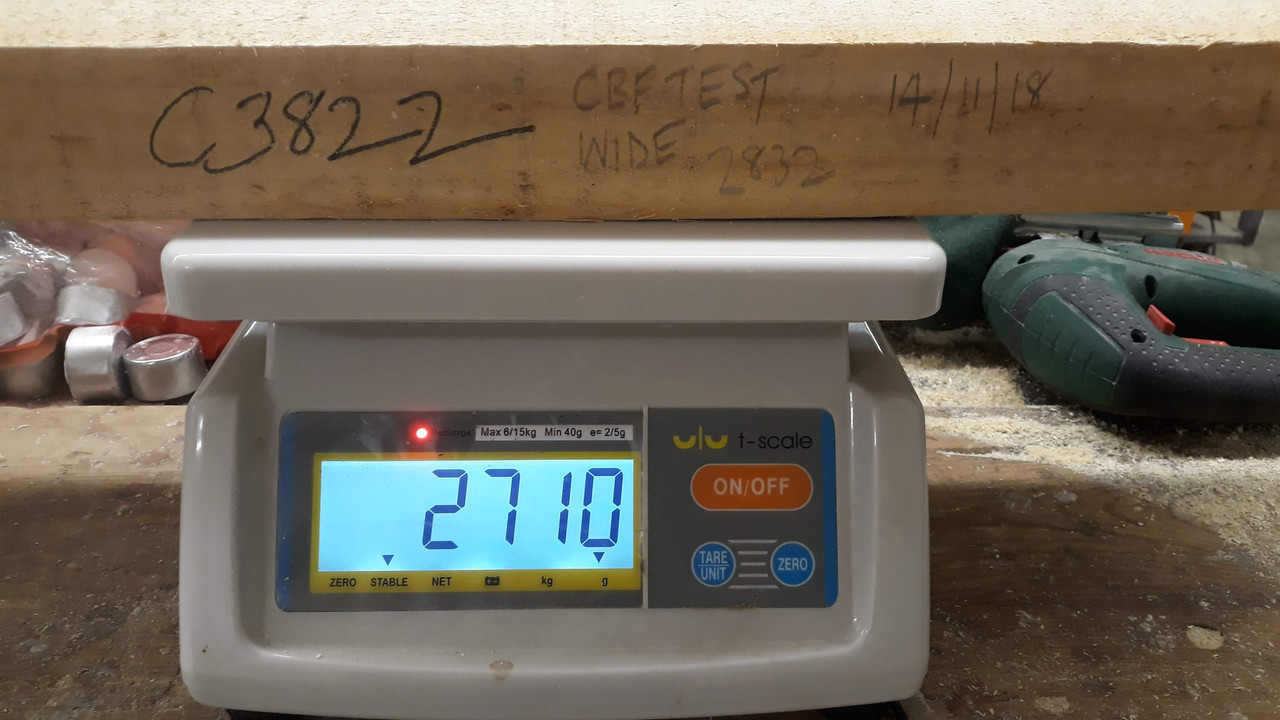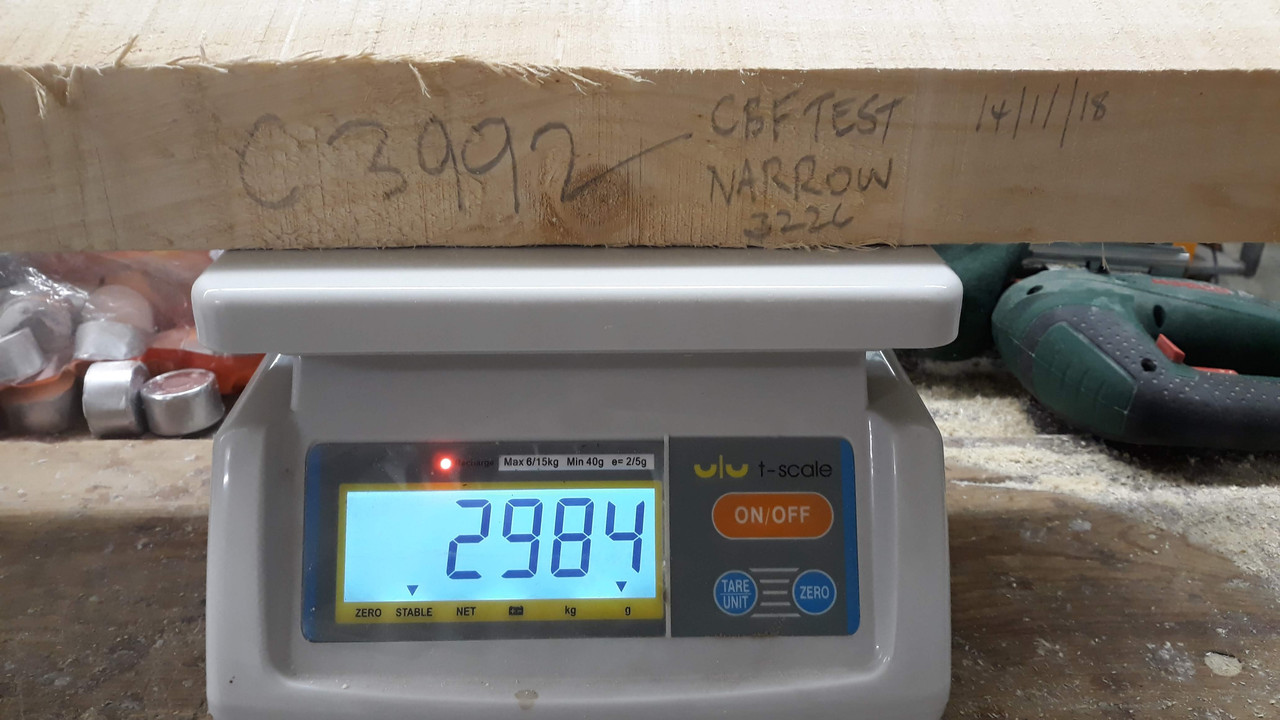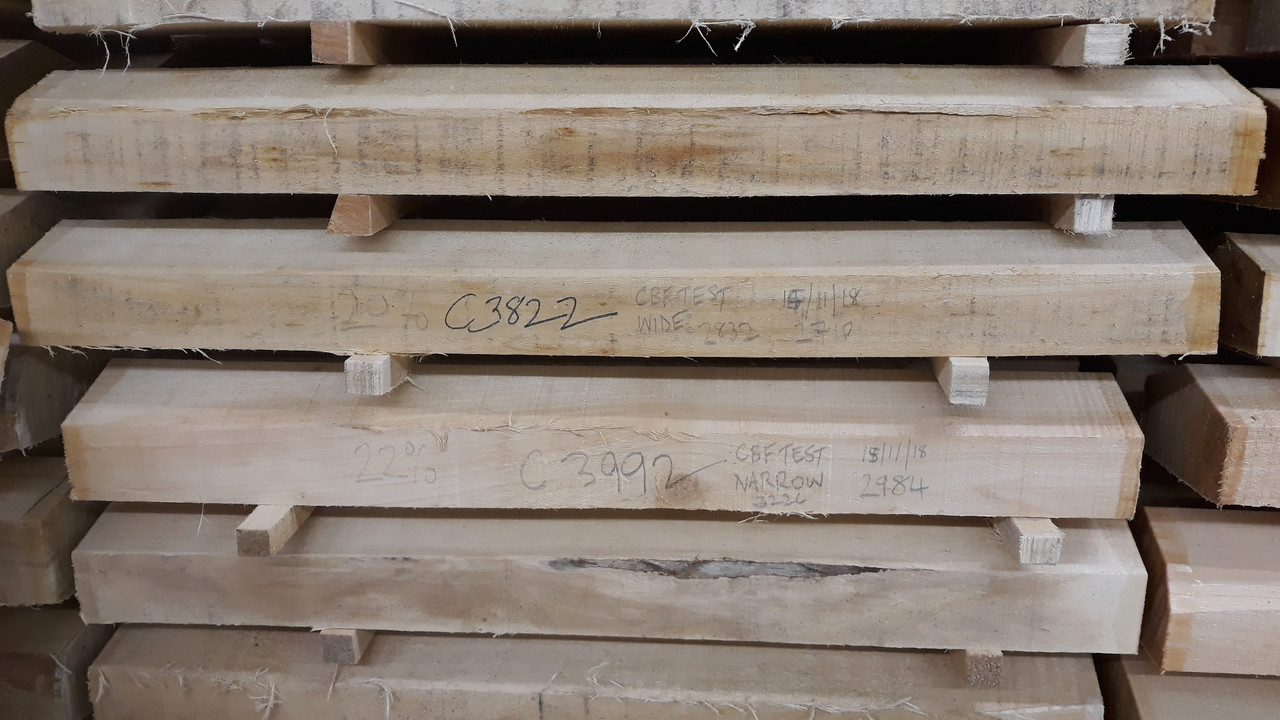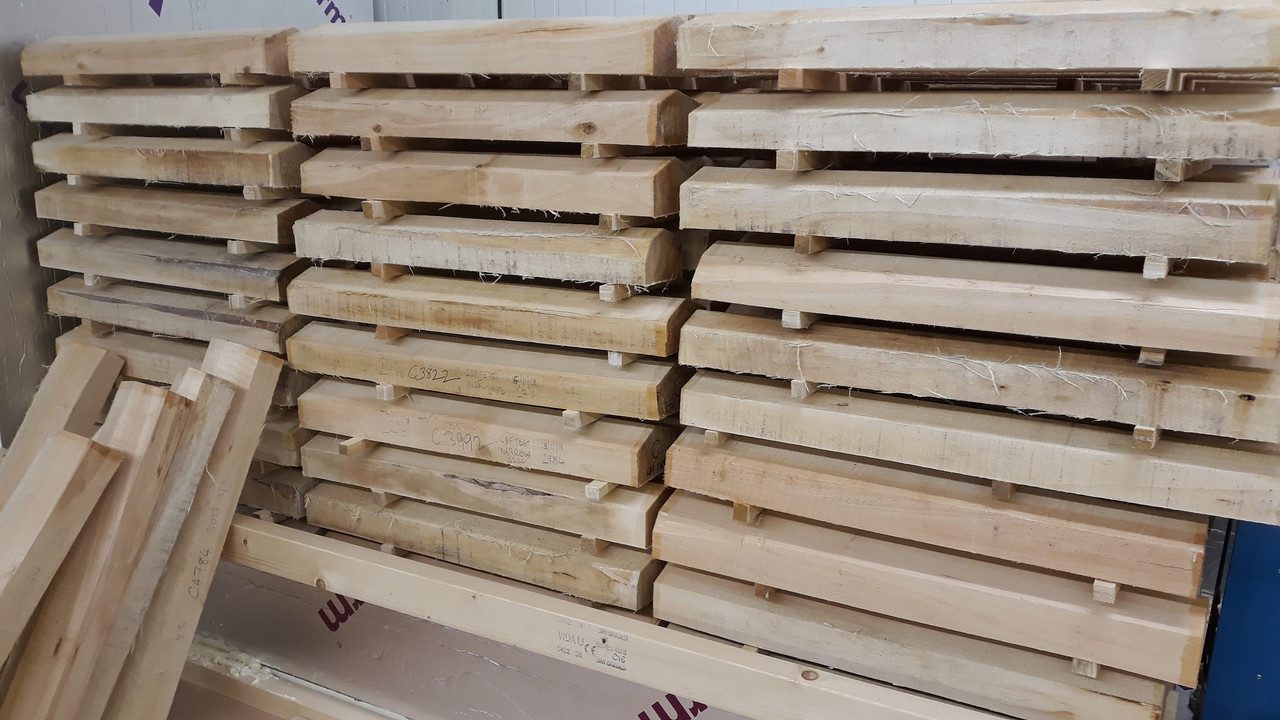Right, about time for a follow up I think. As you can see in the photos below, the airdrying has slowed down now. Both clefts have lost over a kilo, interestingly over the past couple of weeks the Narrow grain (NG) cleft has lost a little more than the Wide Grain (WG) cleft - kind of catching up in a way. I guess this is because weight is lost from the outside in, so weight loss slows as the moisture has to be drawn from deeper within the wood.
WG cleft NG cleft
NG cleft
Anyway, time to move to the next stage. Both clefts are now in the kiln, the WG cleft is at 70% of its original weight, the NG cleft is at 74%. I have placed them in the stack close together as you can see, so that the drying conditions for both are as similar as possible. I also measured the moisture levels, going into the kiln the WG cleft showed 20%, the NG cleft showed 22%. I am aiming to dry the stack to 10% moisture, +/- 2%.


So, I'll be firing it up tomorrow, and hope to be able to report the dried results in a month or so. All being well we can then move towards a couple of bats in the new year. Any comments or questions welcomed as always.

 Author
Topic: Narrow Grain vs Wide Grain - Amateur Science (Read 35929 times)
Author
Topic: Narrow Grain vs Wide Grain - Amateur Science (Read 35929 times)
